Consider the following situation where you have 800 versus 200 observations:
library(ggplot2)
df <- data.frame(
x = rnorm(1000, rep(c(1, 2), c(800, 200))),
class = rep(c("A", "B"), c(800, 200))
)
ggplot(df, aes(x, fill = class)) +
geom_histogram(bins = 20, position = "identity", alpha = 0.5,
# Note that y = stat(count) is the default behaviour
mapping = aes(y = stat(count)))

You could scale the counts for each group to a maximum of 1 by using y = stat(ncount):
ggplot(df, aes(x, fill = class)) +
geom_histogram(bins = 20, position = "identity", alpha = 0.5,
mapping = aes(y = stat(ncount)))

Alternatively, you can set y = stat(density) to have the total area integrate to 1.
ggplot(df, aes(x, fill = class)) +
geom_histogram(bins = 20, position = "identity", alpha = 0.5,
mapping = aes(y = stat(density)))

Note that after ggplot 3.3.0 stat() probably will get replaced by after_stat().



